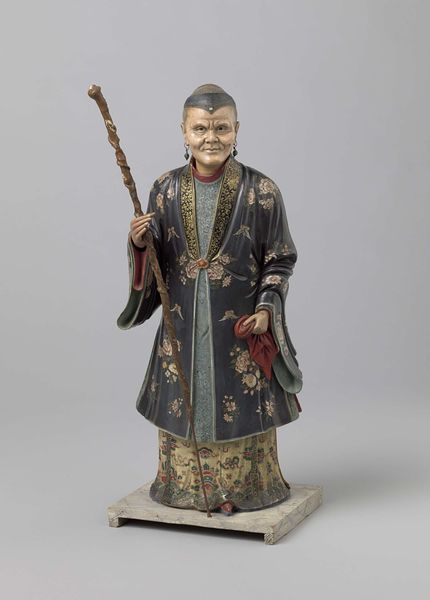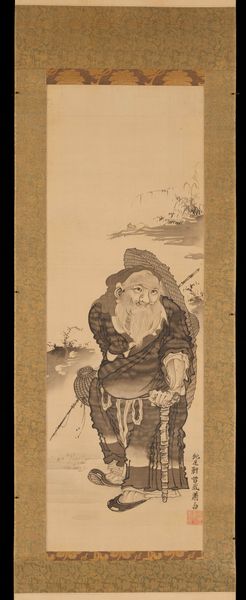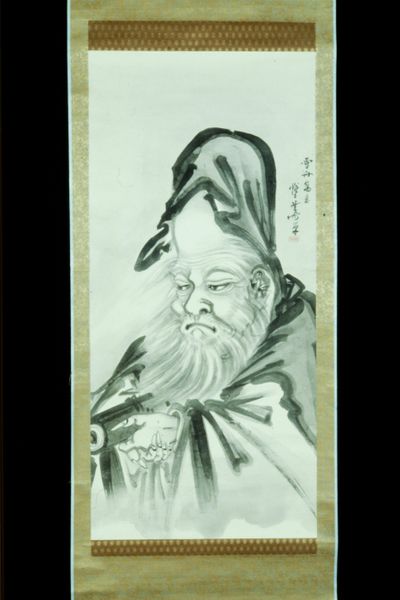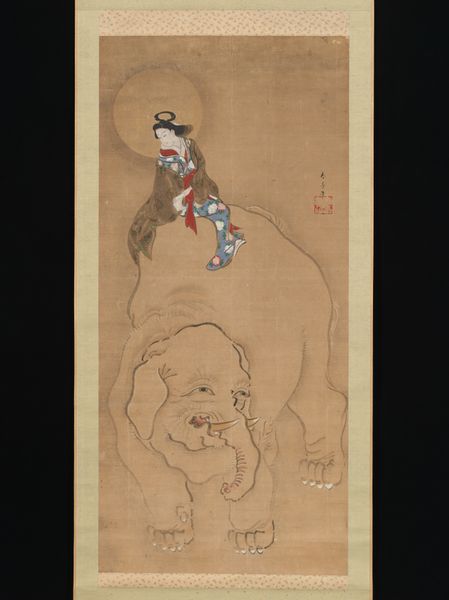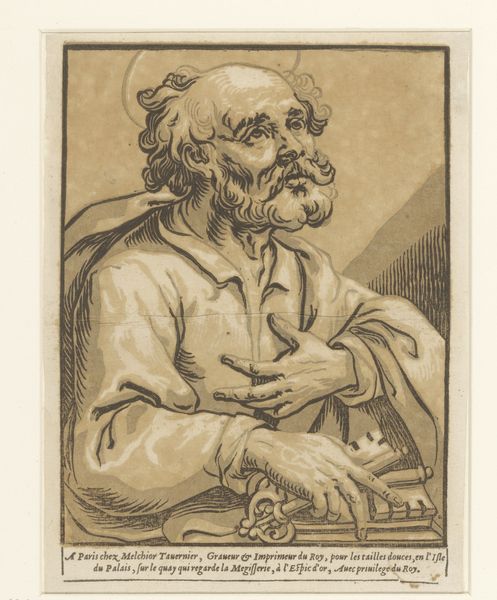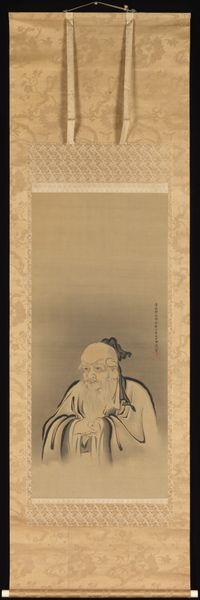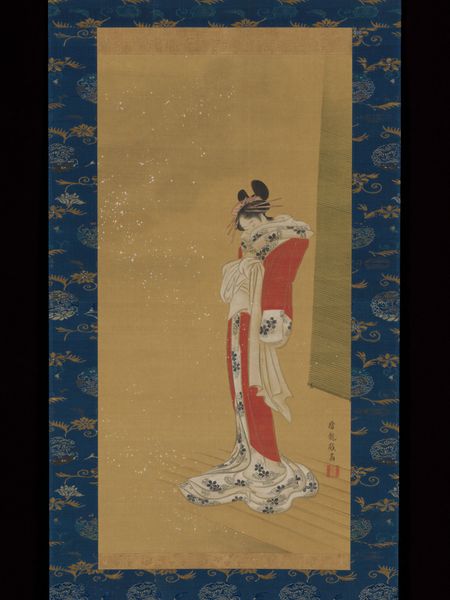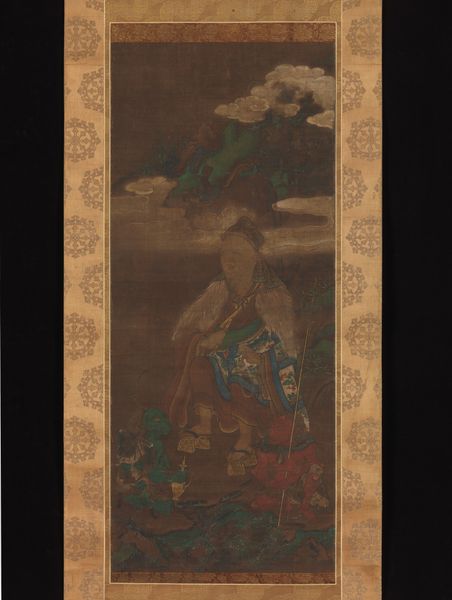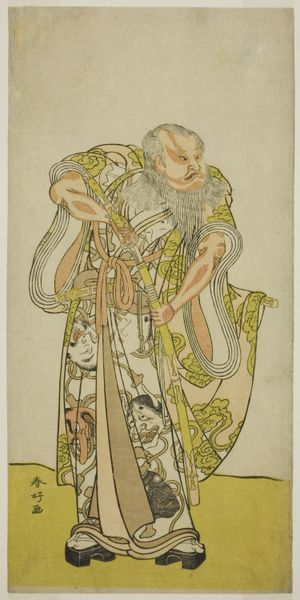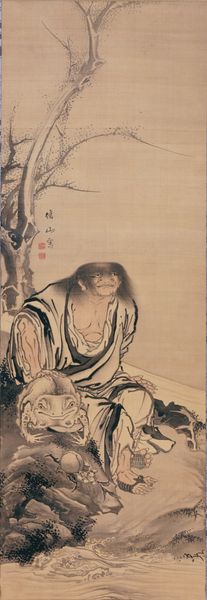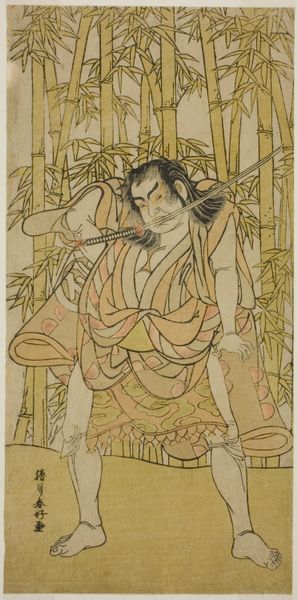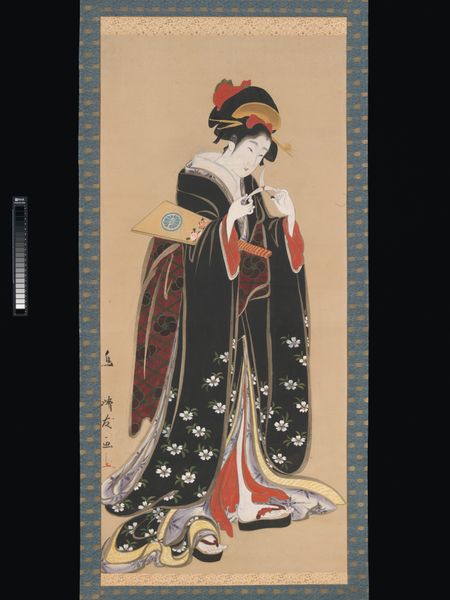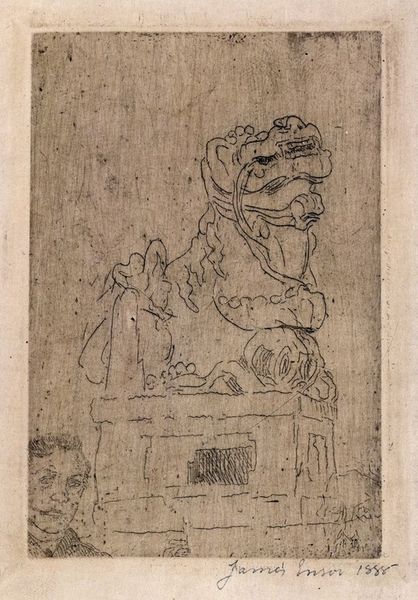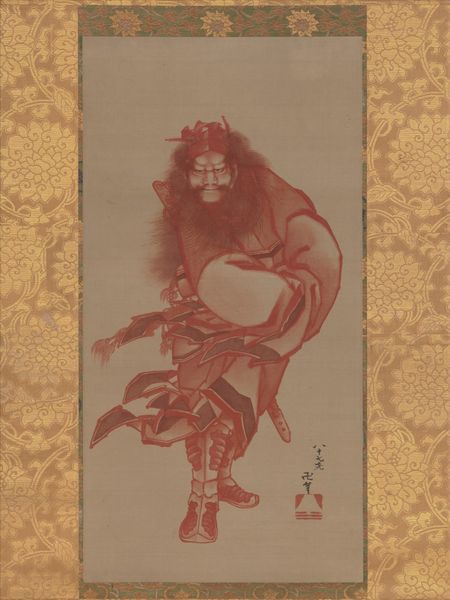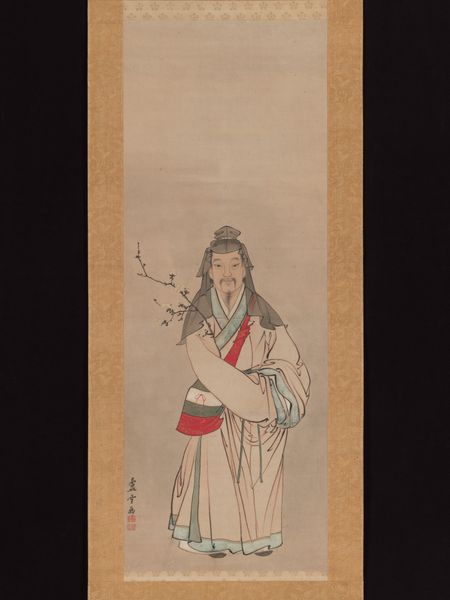
ceramic, porcelain, sculpture
#
portrait
#
sculpture
#
asian-art
#
ceramic
#
porcelain
#
sculpture
#
men
#
decorative-art
#
statue
Dimensions: Height: 7 5/16 in. (18.6 cm)
Copyright: Public Domain
Curator: Before us stands "Figure of a Seated Chinese Man," a porcelain sculpture created between 1740 and 1770 by the Mennecy manufactory. What are your initial thoughts? Editor: It immediately strikes me as an exercise in cross-cultural fascination and appropriation. The almost cartoonish depiction of the figure atop that opulent gilded base speaks to the complexities of European engagement with the East. There's a kind of unsettling exoticism here. Curator: Exactly! Consider the material—soft-paste porcelain. Mennecy was at the forefront of porcelain production in France, striving to replicate the highly sought-after Chinese porcelain. This piece demonstrates their technical skill but also speaks volumes about trade, industrial espionage, and the competitive market for luxury goods at the time. The florals seem deliberately crafted and recall a romantic vision of Chinoiserie. Editor: And let’s not forget the implications of depicting a Chinese man in this way, presented as a decorative object. There’s an inherent power dynamic at play. Whose gaze is this sculpted figure meant for? And how does it reinforce or challenge existing European understandings of the East? It's all tied up in colonial power structures. The decorative flowers might try to "soften" it, but they are an integral piece of a political whole. Curator: Precisely. And the fact that this object would have been displayed in a private collection, likely a wealthy European home, further reinforces that point. It transforms an individual into an exotic spectacle, a conversation piece designed to impress visitors with the owner's taste and worldly knowledge, or at least the appearance of it. Editor: The floral robe flirts with a dangerous exoticism. The almost whimsical decoration hides the way the figure embodies ideas around orientalism. How often did consumers stop to consider how a representation like this may shape perceptions about race or difference, or was the craft itself the real allure? Curator: Perhaps the labor that created the golden rococo stand contrasts starkly to the Chinese ceramicist. Did the Mennecy manufacture employ Asian artists, or did it use purely European expertise? These details are easy to miss at a glance, but become essential as the pieces come together as a whole. Editor: A lot of layered questions arise from such a diminutive object. It invites us to examine history and consumer culture but to also challenge how the language of visual stereotypes evolves, or fails to evolve, across time. Curator: Agreed. By considering its materiality and social context, we expose narratives beyond mere aesthetic appreciation. Editor: Ultimately, a decorative work can provoke critical dialogues about our shared histories and continued cultural exchanges.
Comments
No comments
Be the first to comment and join the conversation on the ultimate creative platform.
